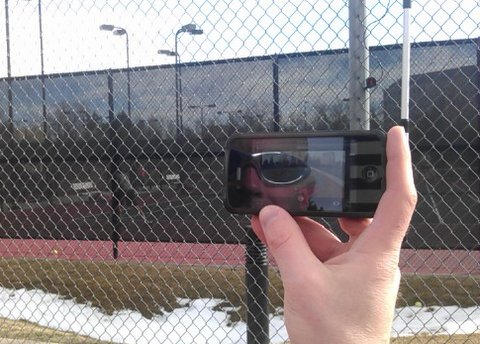FAQs
How do I know what I’m recording?
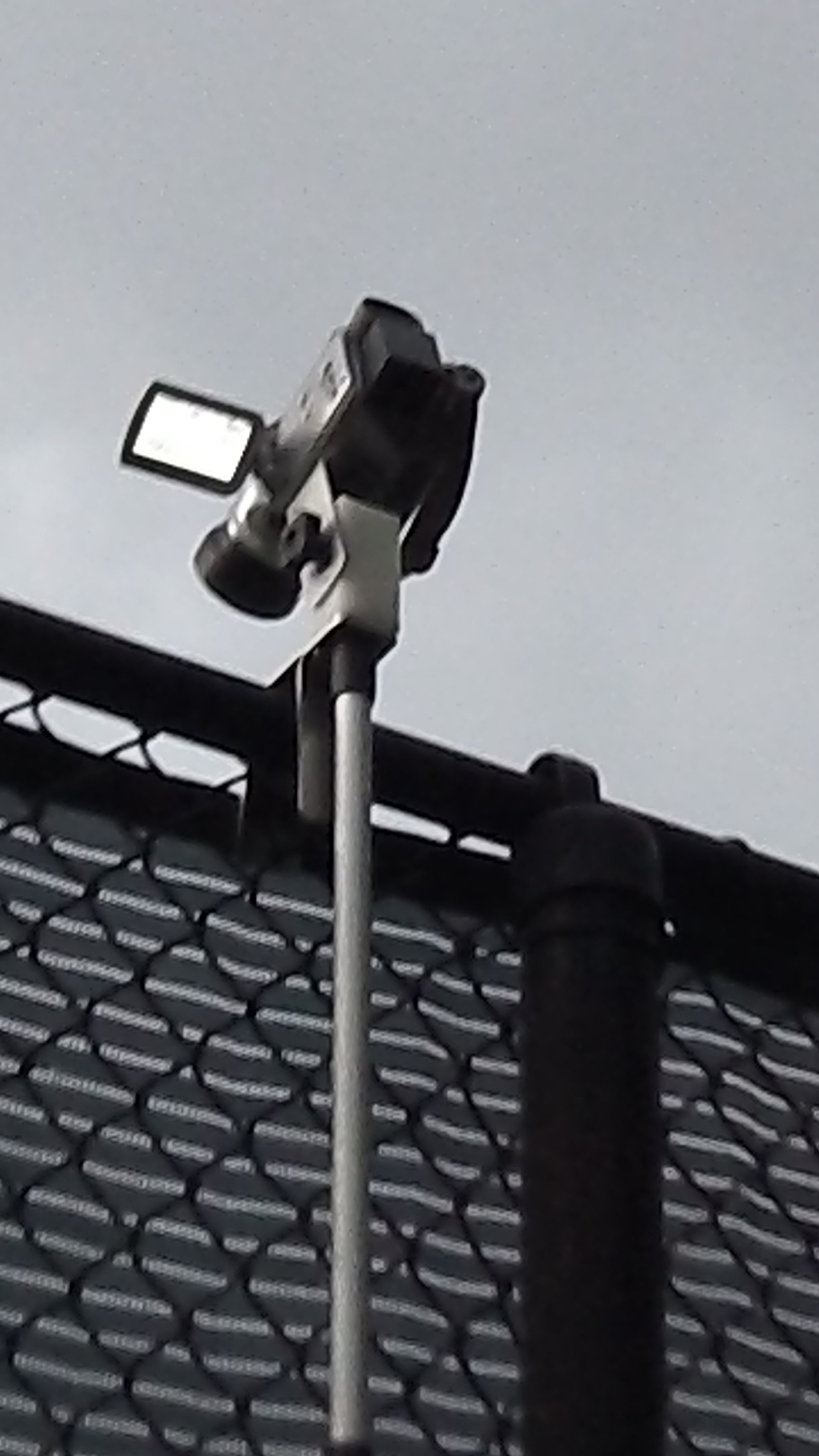
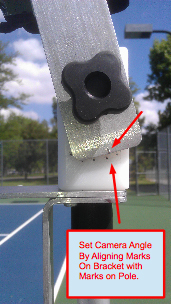 This is a common question with a simple answer. Simply tilt the bracket to the pre-existing dot and you will have the correct angle for any standard tennis court. I almost wish it were harder, but it’s not. 99% of tennis courts have a 10′ high fence and either an 18′ or 21′ setback from baseline to fence. It’s really that simple!
This is a common question with a simple answer. Simply tilt the bracket to the pre-existing dot and you will have the correct angle for any standard tennis court. I almost wish it were harder, but it’s not. 99% of tennis courts have a 10′ high fence and either an 18′ or 21′ setback from baseline to fence. It’s really that simple!
If you do encounter an unusual or non-standard court, you may want to turn on the wireless and make sure you have the picture you want. The whole process, if necessary, takes less than a minute. Of course, if you have a standard camcorder, you can just tilt the viewfinder down while it’s on the fence. It’s hard to mess up when using any of the newer wide angle camcorders like the MUVI K-2 or the GoPro.
Will it work with any camera? Can you suggest a camera?
The QM-1 works with any camera or camcorder. It has a standard 1/4 x 20 camera screw that is used throughout the industry. Our favorite cameras are the Muvi K-1 or K-2. Some people use a GoPro HD camera – almost any camera that has a built-in wide-angle lens or one that will accept an attachment will work fine. Click here for a sample of the MUVI and the QM-1.
I've seen other mounts that cost more and I don't mind paying for quality. Why doesn't the QM-1 cost more?
Paying more money doesn’t always get you a better product.
Here are two Amazon reviews (cut and pasted as-is).
Regarding the QM-1:
“Work as designed. no hassle set up. I just set to a premarked angle and it worked perfectly. i guess the tennis fence are all standard height or something…”
Regarding a different, much more expensive mount that uses a mirror to aim the camera:
“Flimsy design and difficult/impossible to set up the camera from outside the court, if you want to record your kid’s tennis matches, then buy the cheaper camera mount [QM-1] from my tennis tools (or something like that) that sells for about $69 (which is half the price of this mount!). The other one [the QM-1] is much more sturdier than this one, works better, and can be used from outside the court…” “…once you figure out the angle for the mount, you don’t need to ever change it again.”
We have thousands of happy customers, and just consider our no-questions-asked return policy. We will even pay for the return shipping if you are not satisfied.
Do I need a wide-angle lens?
Not if you are using a Muvi or GoPro. Other hand-held camcorders (especially those under $400.00) probably will need a wide-angle lens and unfortunately, at that price range camera manufacturers are leaving off the ability to attach anything. A Kodak Playsport requires a wide-angle lens attachment. If you don’t have one of these cameras and don’t have a wide-angle lens, mount your camcorder in the corner and shoot diagonally across the court. You can get away with a narrower field of view this way and it’s not a bad perspective at all.
Which side of the fence does the QM-1 mount from?
What do you mean when you say the QM-1 is “calibrated” or “adjustable”?
 Simply tilt the camera bracket to the pre-marked dot for a standard court. While this usually works all by itself, you can easily mark (with a pen or sharpie) the right setting for a particular court. Then just tilt the camera to that angle and you are in business. Again, a standard court is already pre-marked on the unit as it is shipped, and 99 percent of courts are standard (10′ fence that is either 18′ or 21′ back of the baseline).
Simply tilt the camera bracket to the pre-marked dot for a standard court. While this usually works all by itself, you can easily mark (with a pen or sharpie) the right setting for a particular court. Then just tilt the camera to that angle and you are in business. Again, a standard court is already pre-marked on the unit as it is shipped, and 99 percent of courts are standard (10′ fence that is either 18′ or 21′ back of the baseline).
How do I center my QM-1?
How do you use the QM-1 for lessons?
The QM-1 can be used as a fence mount for the entire court, or some people report mounting it directly to the wire mesh at court level for stroke or footwork analysis. For immediate feedback, and I do this all the time, you can shoot with your camera, attach to your laptop via USB cable, and playback with QuickTime or other video program. It works really well for stroke analysis because the feedback is immediate and you can advance one frame at a time if you want. As a student, it’s a great record (and if your instructor knows he’s being taped, he might act differently?) An instructor can use it as a way to see what he might have missed and to look for other things to work on next time.
Does it work indoors?
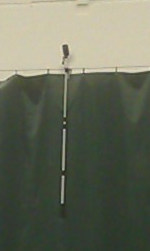
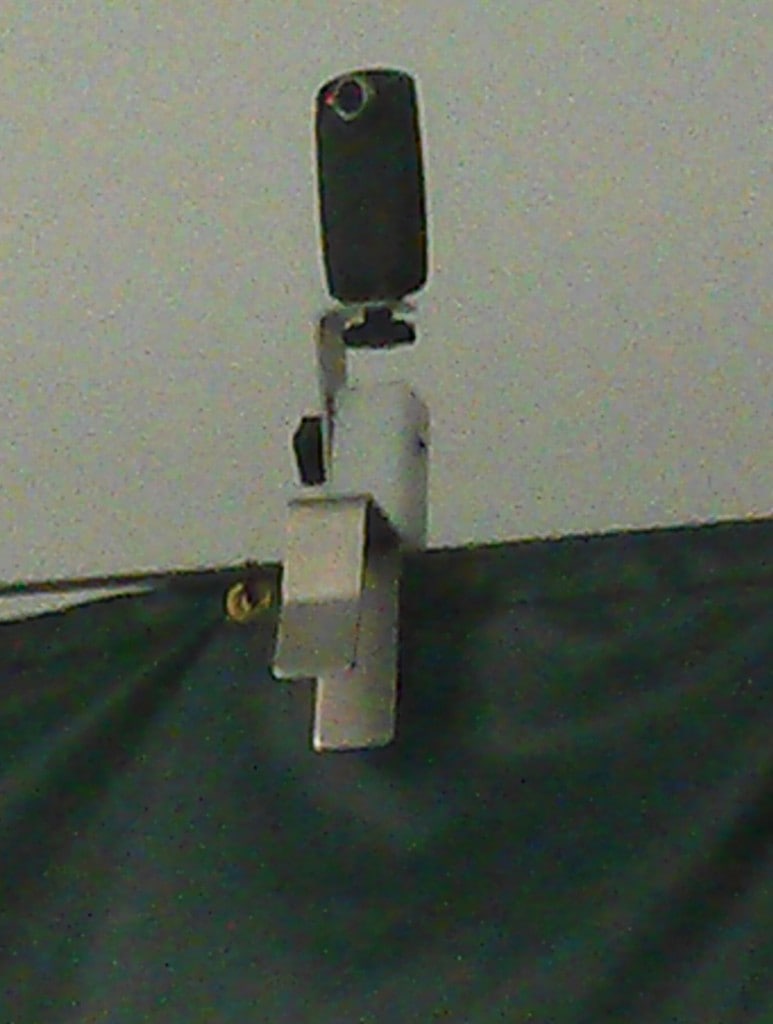 It works quite well indoors. Most indoor courts have a curtain hung from a steel cable, and any steel cable, pipes or handrail, etc. work fine.
It works quite well indoors. Most indoor courts have a curtain hung from a steel cable, and any steel cable, pipes or handrail, etc. work fine.
On a cable, the space between the inside leg and the pole itself fits perfectly over a cable very with negligible to no movement. We’ve also hung the QM-1 over pipes, doors…anything is fair game! If you have a special circumstance, the QM-1 can usually be modified to work. Click here for more details, and please contact us for any further questions.
Where is the QM-1 made?
The pole and metal brackets come from China – the bulk of manufacturing and assembling takes place in Denver, Colorado.
Can’t I just make one myself?
You could make something, with a lot of work. The QM-1 would be very hard to duplicate without going to a lot of trouble. As an avid player and coach, I put a lot of thought into the QM-1 to make it light, easy to use, affordable, etc.

